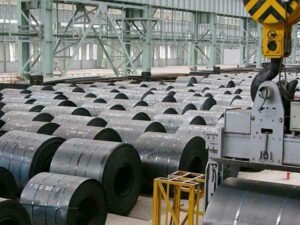Stainless Steel Bar
Key Features
- Available Grades — 301, 302,
303, 304, 316/316L, etc - Available Standards— ASTM, AISI, JIS, ISO, EN, BS, GB,
- Available Finishes— No.1, 2D, 2B, BA, 3, No.4, No.240, No.320, No.400, HL, No.7, or as your Request
- Surface— Pickled, Black, Bright, Polishing, Blasting, etc
- Length(m)— 6m, 8m, 3m , or as your Request
Shapes
Stainless Steel Products Specifications
| Name | Shape | Size | Thickness | Width |
|---|---|---|---|---|
| Hexagonal Bar | Hexagonal | Diameter: 2mm ~ 100mm | – | – |
| Round Bar/Rod | Round | Diameter: 2mm ~ 100mm | – | – |
| Flat Bar | Flat | Thickness: 3mm x Width: 20mm | 3mm ~ 800mm | 20mm |
| Angle Bar | Angle | Size: 4mm x 4mm | 4mm x 4mm | – |
| Square Bar/Rod | Square | Size: 10mm x 100mm | – | 100mm |
What's the Stainless Steel bar & rod?
Stainless steel bar & rod refers to a solid long strip of steel with a circular cross-section. The benefits of stainless steel bar include material longevity, corrosion resistance, attractive appearance, ease of fabrication, impact resistance and long term value. Popular for its corrosion resistance, stainless steel bar/rod is used in a wide range of applications including the construction of building foundations, bridges, and marine environments.
Basic types of stainless steel bar & rod
Although the numerous potential manufacturing processes that stainless steel might go through can produce all manner of tweaks and buffs to the end product, most steel bar suppliers will generally divide stainless products into five basic categories.
Surface Finish
A comprehensive collection of finishes is also available from QINGHE STEEL when purchasing stainless steel bar/rod. Popular finish options include:
- Also cold-rolled, the 2D finish has a matte surface with low reflectivity.
- HR / No.1 . This hot-rolled finish has a scaled appearance and so is ideal where the final aesthetic is not an important concern.
- BA / 2R. Cold rolled and annealed in a controlled atmosphere to retain a highly reflective finish. This highly-reflective finish is achieved by annealing the alloy in a carefully controlled atmosphere.
- Smooth finish, reflective grey sheen. Most widely used surface finish. The most popular surface finish, 2B offers a smooth appearance with a grey, reflective sheen.

Application
- Architectural design and engineering
- Food-grade production environments and utensils
- Household items, fixtures and products
- Medical supplies, machinery and surgical/hygiene tools
- Chemical/marine vessels and equipment
- Oil/gas pipelines and platforms
- Water treatment and supply
- Transport and automotive components, tankers and containers
Qinghe Steel stocks a wide range of stainless steel bar & rod sizes for your specific project needs. We offer quick delivery throughout the world. Contact us today to discuss stainless steel bar & rod for your project needs.
Package
FAQ
Does Stainless Steel rust?
Stainless Steel is very corrosion resistant because it is alloyed with Chromium which reacts to oxygen and creates a rust resistant barrier. This is not to say that stainless will never rust, in certain conditions it may still corrode. For example, 304 stainless is the most common stainless alloy, but in marine environments it will eventually rust. 316 stainless alloy was created with more nickel to be more corrosion resistant in those Marine environments. Other stainless alloys are specialized to be more corrosion resistant in a number of different situations, i.e. 310 alloy is corrosion resistant in high heat environments.
Why Choose Stainless Steel?
- Stainless steel extrusions are used for these types of profiles due to the materials’wear and corrosion resistance. In addition to being essentially rustproof, some grades of stainless steel are also immune to acids and/or other highly corrosive compounds, even in high concentrations.
- Stainless steel, in general, is a very low maintenance material. It can be repeatedly steam-cleaned or sterilized without degrading and does not require painting or other surface finishes. Stainless steel exhibits high electrical resistance, as well as low thermal conductivity.
- However, due to its hardness, stainless steel is not easy to extrude. This dictates that wall thickness must be greater than those of extruded shapes made from most other alloys.
What level of corrosion resistance do I need, and what type?
Consider water ingress, exposure to changing weather conditions, potential for exposure to chemicals, chlorides and acids
Will I need to weld or work the stainless steel?
Some alloys are more suitable to welding, or more easily workable, than others
Typically, austenitic steels will be more weldable than most other alloys, but there are exceptions depending on the types of stainless steel finishes and treatments you may require
Get in touch
Contact our sales
Appointment
Let's start your project
Related Products














